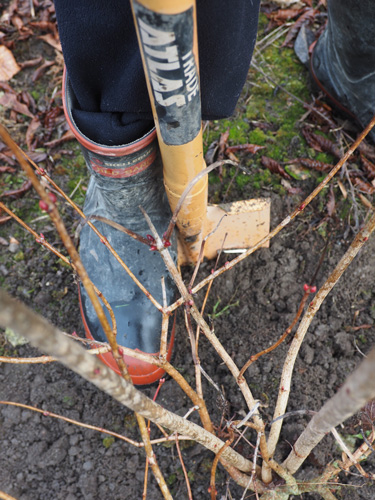Transplant a shrub or small tree
Sometimes it can’t be helped - you realise you have planted a tree in the wrong place and it must be moved. The best time to do this is while the tree is dormant and is least likely to suffer water stress, in late autumn, winter or early spring.
Whether a tree can be shifted successfully or not depends on the age and size of the tree and what kind of tree it is. Many trees that are less than three years old and under three metres tall have a good chance of success when moved in winter, including Magnolias, Rhododendrons, Azaleas, palms, oaks, roses, English box, fruit trees and flowering cherries. Trees with naturally shallow roots survive better than those with long taproots.
Most newly transplanted trees or shrubs react to being moved and will show some for of transplant shock. This is because it is virtually impossible not to damage the roots. The most important roots are the tiniest roots, farthest away from the plant. These roots and their even smaller ‘root hairs’ are the lifeline of the plant, absorbing its water and nutrients, and it is these roots that are the most easily destroyed or dried out during a shift. The more of the roots we can keep when transplanting the better the chances of survival.
- Dig the new planting hole. It will need to be at least 50% wider than the rootball of the tree you are moving and at least as deep.
- Using a sharp shape, cut straight down into the soil making a circle around tree about 30cm away from the trunk. If your tree has been in the ground a few years, you will most likely need to slice through some of the roots. You want to take much of the rootball as possible without being too heavy to lift. Ideally you will end up with a ball of roots and soil that is 50-70cm wide and a good 50cm deep.
- Place your tree in its new hole, and firmly install at least one stake (two or three for large trees or on windy sites) on the outside of the root ball. Then back fill with soil, firming it around the roots as you go.
- Tie your tree firmly to its stakes with stretchy ties and water thoroughly.
- Add a layer of organic mulch 5-10cm thick, but don’t pile it up around the truck or the bark may rot.
- Water vigilantly in dry periods (but don’t over-water) until the tree is well established.
- Wait until the tree show signs of growth before applying fertiliser.
Notes:
- Transplanting stress is to be expected and your tree may ‘sulk’ until its new roots are well established. It may take 6 months or longer for it to start looking strong and healthy.
- Remove stakes after the first year or two, once the tree has developed enough roots to anchor itself against the winds, otherwise the tree may develop a weak trunk.
- For larger trees and shrubs, ‘root pruning’ can improve transplanting success. This is where the roots are sliced through in autumn while the tree is still in active growth. This encourages a fresh flush of feeder roots to sprout before the final shift in winter or early spring.
- When shifting evergreens, some pruning of the top growth is usually recommended to help compensate for the corresponding loss of root volume.
7-Jul-2016



